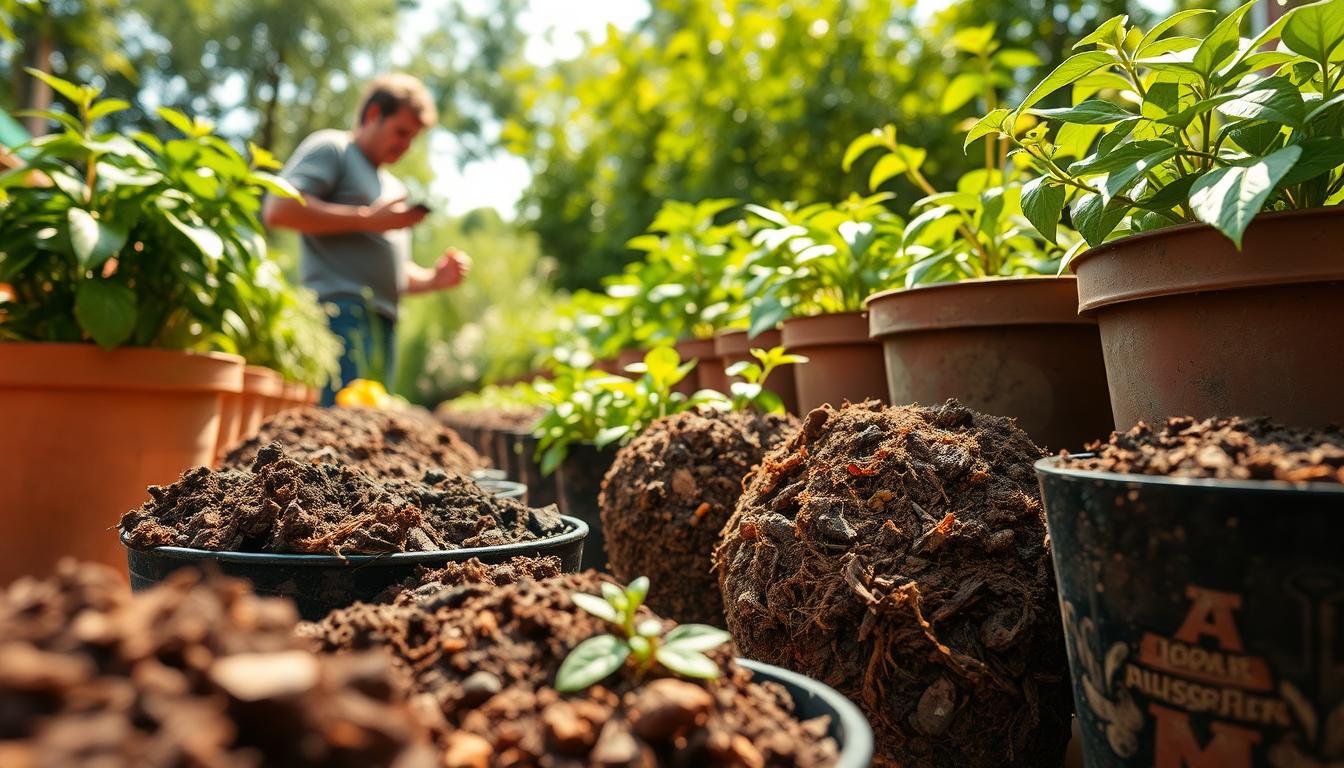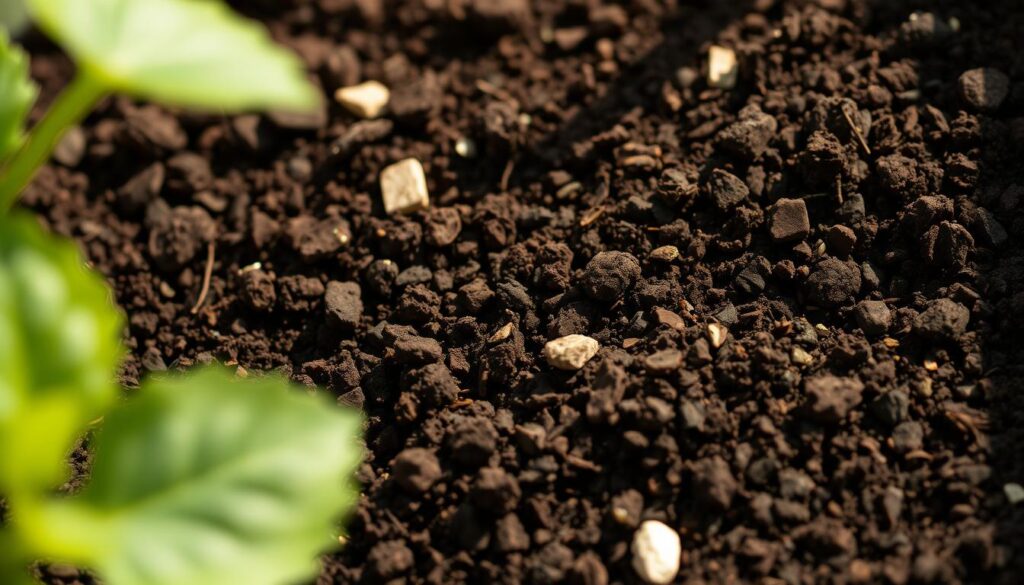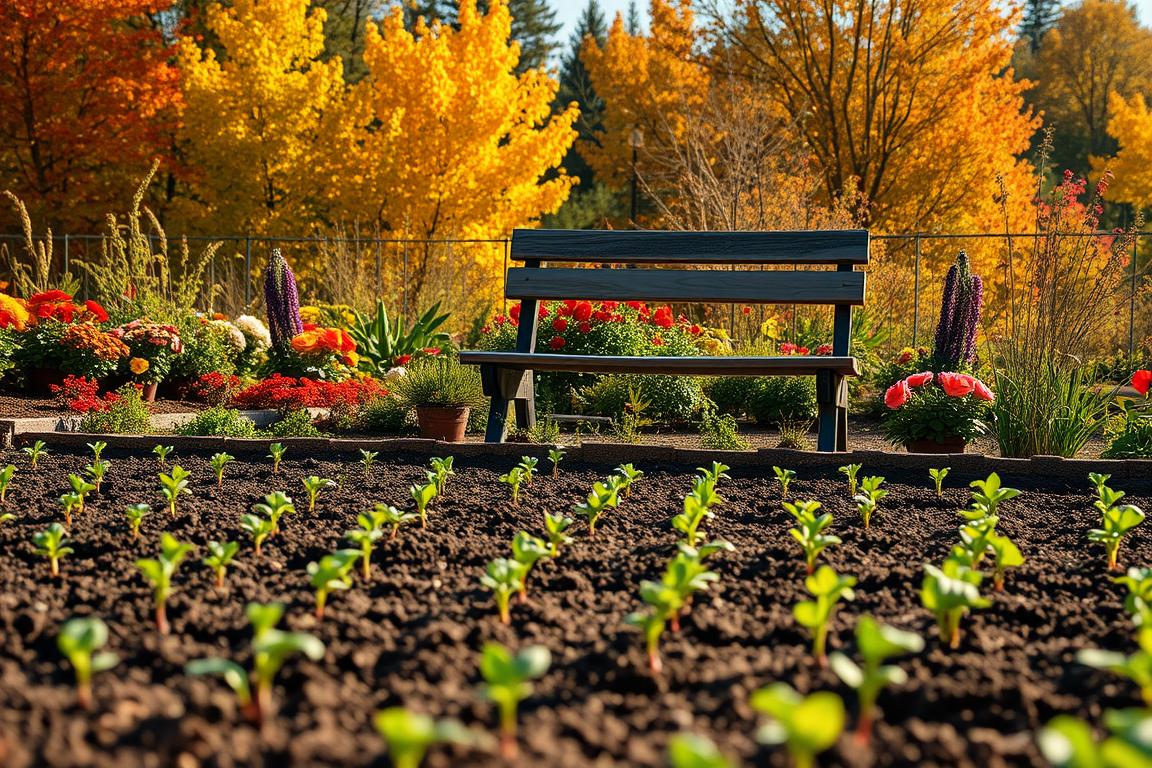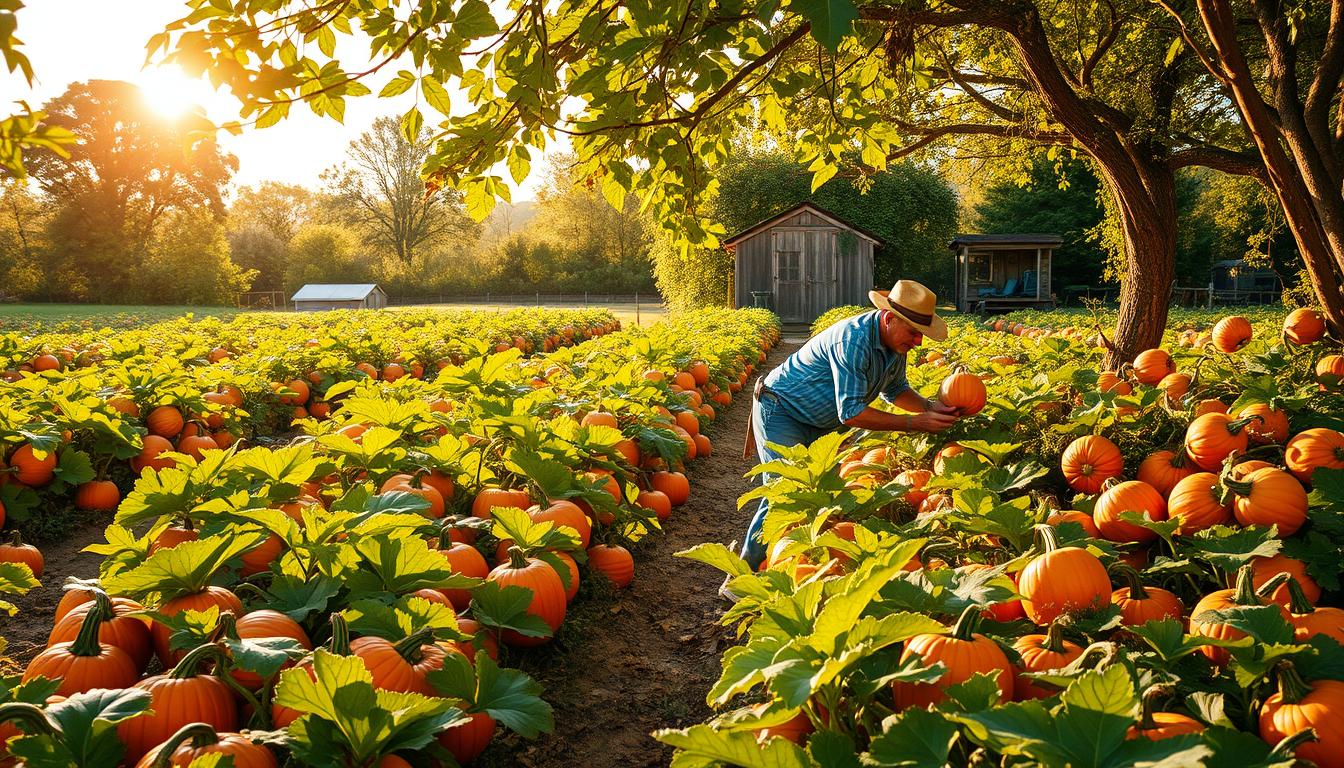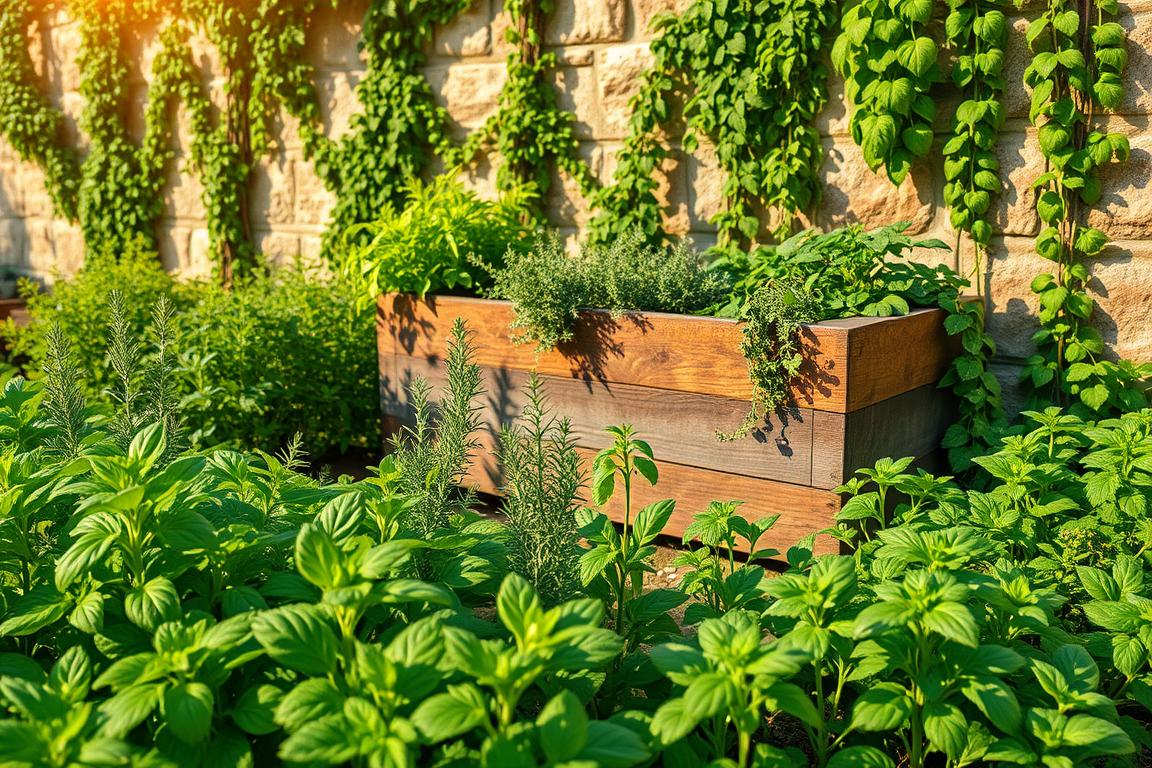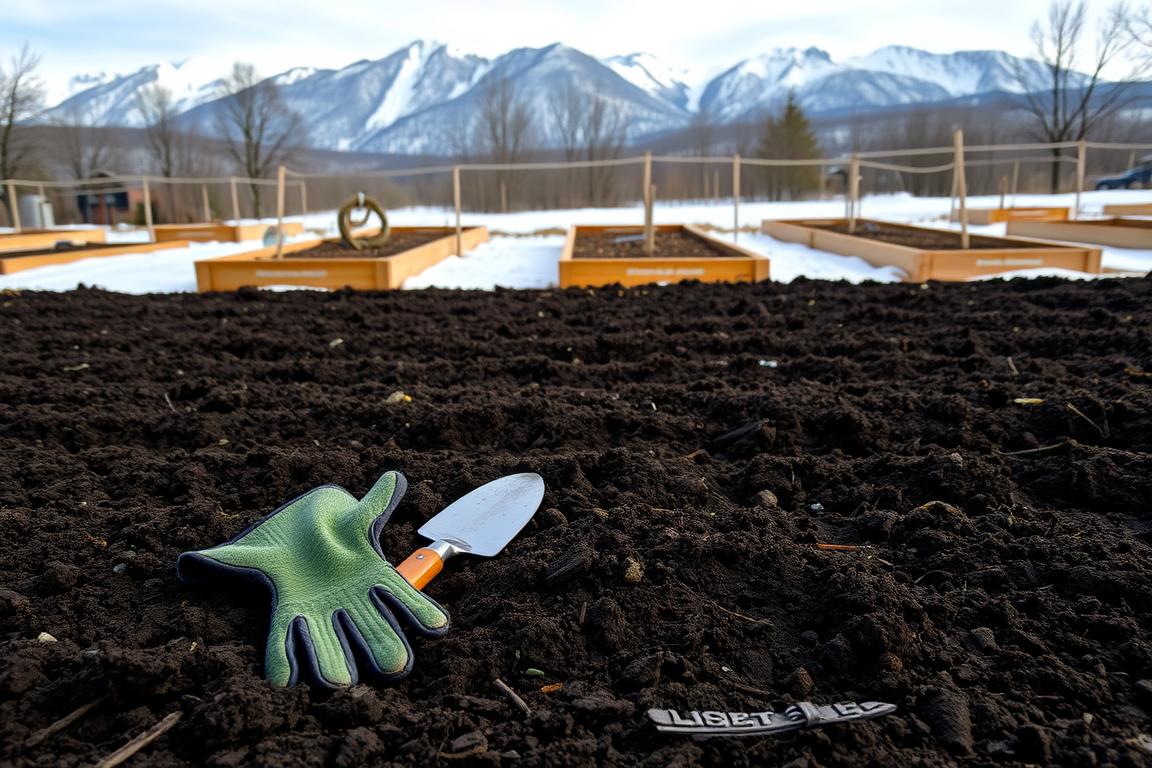Choosing the right soil for our container plants is key to their health and growth. In container gardening, picking the right soil is vital. With so many options, it’s hard to know which one is best for potted plants. We’ll look at what to consider when picking soil for containers, including the best soil for potted plants.
We aim to help you make smart choices for your container garden. Knowing the difference between garden soil and potting mix is important. It helps create a great environment for your plants to grow. Whether you’re new to gardening or experienced, the right soil is essential for a successful container garden.
Key Takeaways
- Choosing the right soil is key for container plant health and growth.
- Container gardening needs a different soil type than traditional gardening.
- Soil selection for containers should consider drainage, aeration, and nutrient availability.
- Potting mix is a better choice than garden soil for container plants.
- Understanding the difference between garden soil and potting mix helps create a better plant environment.
- Container plant care involves selecting the best soil for potted plants and proper care and maintenance.
- Soil selection for containers is critical for successful container gardening and thriving plants.
Understanding Container Soil Basics
Choosing the right soil for potted plants is key for their health. We must pick the best soil for our containers. A good mix balances water, nutrients, and air.
Container plants need soil that drains well and is light. A mix of 60% peat moss or coconut coir, 20% drainage materials, and 10-20% organic matter works well. This mix ensures good drainage, aeration, and nutrients.
Quality container soil includes:
- Organic matter like compost or aged manure to boost nutrients and health
- Drainage materials like perlite or vermiculite to avoid waterlogging
- Moisture-retaining materials like peat moss or coconut coir to slow drying
Knowing these basics helps us create a balanced mix for our plants. This knowledge ensures our plants get the best care, whether indoors or outdoors.
Essential Properties of Container Plant Soil
Container gardening relies heavily on the soil’s composition for plant health. The soil must drain well, breathe, and hold water. These qualities are key for indoor plants to get the right moisture and nutrients.
A good container gardening soil mix is rich in organic matter and has a balanced pH. Organic soil improves soil structure and makes nutrients more available. This mix helps plants thrive by providing the right nutrients and conditions.
Some key characteristics of a good potting mix include:
- Good drainage to prevent waterlogged soil
- Aeration to allow for healthy root growth
- Water-holding capacity to retain moisture
- Rich in organic matter to provide nutrients
- Balanced pH to support plant growth
Understanding container plant soil’s essential properties helps us create a great environment for our plants. Whether we’re growing herbs, vegetables, or flowers, the right soil makes a big difference in their health and productivity.
Types of Soil for Different Container Plants
Choosing the right soil for your container plants is key. Indoor plants need soil that holds moisture well. Outdoor plants, on the other hand, do better with soil that drains fast. Organic soil for container gardening is a great choice because it’s natural and supports healthy growth.
The soil composition for container plants depends on the plant type. Succulents need soil that drains well to avoid root rot. Ferns and peace lilies, though, prefer soil that holds moisture. The right soil for indoor plant pots depends on the plant’s needs and the light and water it gets.
Popular container plant soil types include peat moss, perlite, and vermiculite. These are mixed in different ways to create a balanced soil. The best potting soil for container plants varies by plant and environment.
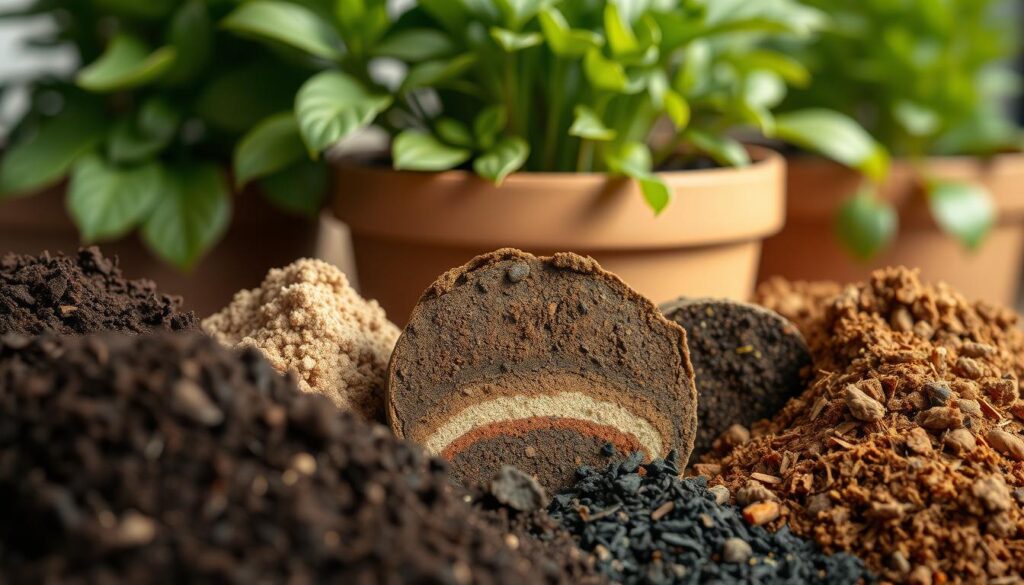
It’s not just about the soil. Each plant has its own needs. Some need more water, others more nutrients. By picking the right soil for indoor plant pots and caring for them, your plants will flourish.
How to Select the Perfect Potting Mix
Choosing the right soil mix for container gardening can be tough. To make sure your plants do well, think about what they need. A good potting mix for container plants should be light, fluffy, and keep moisture.
Look for mixes with organic stuff like sphagnum peat moss and compost. Also, inorganic stuff like perlite and vermiculite is good. They help with air, drainage, and keeping moisture.
A top-notch potting mix for container plants is also clean. This means it’s free from harmful germs. When picking a soil mix for container gardening, think about what your plants need. For example, cacti and succulents need a mix with lots of perlite for good drainage.
For indoor plants, choose mixes without compost or bark. This helps avoid fungus gnats, a common indoor bug.
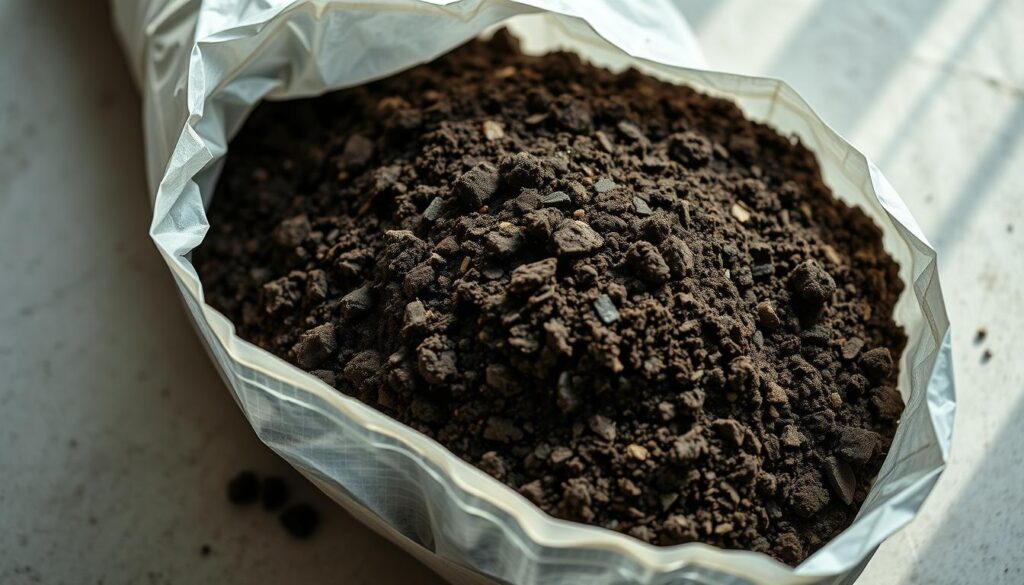
To find the best soil for plants, check the ingredients. Stay away from mixes with pesticides or bad chemicals. Making your own potting mix is also a smart move. It lets you customize it for your plants.
By picking the right potting mix for container plants and caring for them, your plants will thrive. You’ll enjoy a healthy growing season.
Maintaining Healthy Soil in Your Containers
To keep your container plants healthy, start with good soil. Learn how to water right, fertilize regularly, and know when to change the soil. These steps help your plants get the nutrients they need to grow well.
Proper Watering Techniques
Soil moisture is key for container plants. We want the soil to be moist but not too wet. Adjust how often you water based on the plant, container size, and weather. Using drip irrigation helps water the soil without getting the leaves wet, which can prevent diseases.
Fertilization Schedule
Fertilizing regularly with a balanced, slow-release formula is vital. Organic fertilizers like compost tea, fish emulsion, and worm castings give plants steady nutrients. Soil testing kits help us check nutrient levels and adjust fertilization as needed.
When to Replace Container Soil
Soil in containers can lose nutrients over time. We should refresh the soil every 6-12 months by adding new potting soil or compost. This keeps the soil rich in organic matter, helping plants grow strong and healthy.
FAQ
Why do container plants require special soil?
Container plants need special soil for a good balance of water, nutrients, and air. Garden soil is not right for them because it can make the soil too dense. This stops the soil from draining properly.
What are the key components of quality container soil?
Quality container soil should drain well, breathe, hold water, have organic matter, and have the right pH. These properties are vital for the health of your plants.
How do the soil requirements differ for indoor and outdoor container plants?
Indoor plants often need soil that holds more moisture. Outdoor plants prefer soil that drains faster. There are also special mixes for plants like cacti and succulents.
What factors should I consider when selecting a potting mix?
When picking a potting mix, check the label for organic ingredients. Avoid mixes with pesticides or harmful chemicals. Making your own mix can also be a good choice.
How do I maintain healthy soil in my containers?
Keeping your container soil healthy means watering right, fertilizing regularly, and knowing when to change the soil. Watch the moisture levels and look for signs it’s time for new soil.


